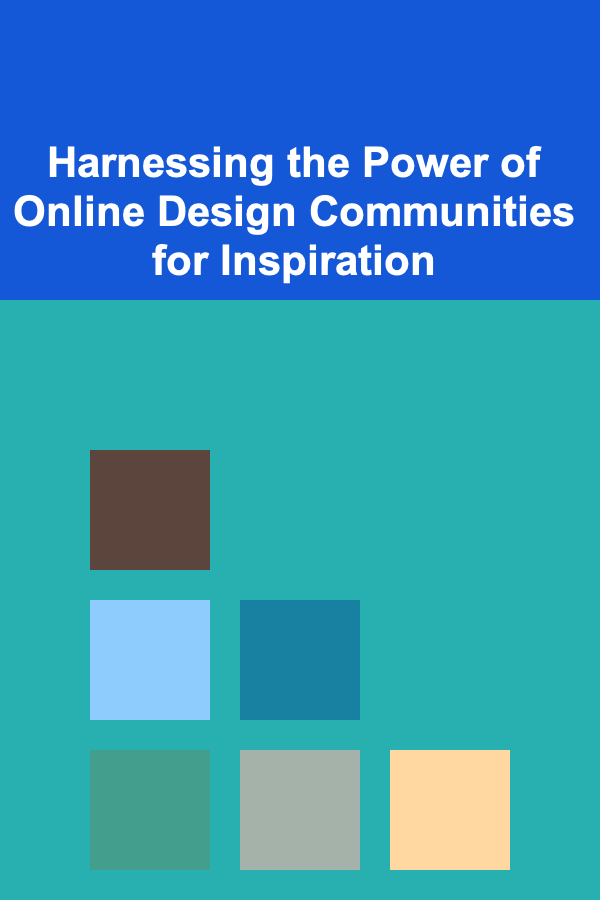
Harnessing the Power of Online Design Communities for Inspiration
ebook include PDF & Audio bundle (Micro Guide)
$12.99$5.99
Limited Time Offer! Order within the next:

In the dynamic and ever-evolving world of design, staying inspired and current is paramount. Gone are the days of relying solely on physical libraries and printed publications. Today, online design communities offer a wealth of resources, inspiration, and connection for designers of all levels, from students just starting out to seasoned professionals. These platforms provide a vibrant ecosystem where ideas are shared, feedback is exchanged, and trends are born. This article delves into the various ways to effectively leverage online design communities for inspiration, exploring strategies for engagement, critical analysis, and ethical application of found ideas.
The Landscape of Online Design Communities
The internet boasts a vast array of design communities, each with its own unique focus, culture, and strengths. Understanding the nuances of these platforms is crucial for maximizing their inspirational potential. Here's a brief overview of some popular options:
- Dribbble: Known for its visually stunning "shots" showcasing design concepts, UI elements, and branding. Dribbble is a great place to find quick bursts of visual inspiration and stay updated on current design trends. Its curated nature often highlights highly polished work.
- Behance: Part of the Adobe Creative Cloud, Behance allows designers to create and share comprehensive portfolio projects, including detailed process documentation. It fosters a deeper exploration of design thinking and problem-solving.
- Awwwards: A platform that recognizes and awards excellence in web design and development. Awwwards showcases innovative and cutting-edge websites, offering valuable insights into interactive design, user experience, and visual aesthetics.
- Designspiration: A visual discovery engine that allows users to create mood boards and save inspiring images. It's particularly useful for exploring visual styles, color palettes, and typography.
- Reddit: Subreddits like r/design_critiques, r/graphic_design, and r/web_design provide forums for discussion, feedback, and resource sharing. Reddit's democratic nature allows for a wide range of perspectives and engagement.
- Pinterest: Although not exclusively for design, Pinterest is a powerful tool for collecting and organizing visual inspiration across various design disciplines. Its pinboard format facilitates the creation of thematic collections.
- Facebook Groups: Numerous private and public Facebook groups cater to specific design niches, offering a space for collaboration, mentorship, and project feedback.
- LinkedIn Groups: Similar to Facebook groups, LinkedIn groups provide professional networking opportunities and industry-specific discussions.
- Online Forums (e.g., Stack Overflow): While not solely design-focused, these platforms are invaluable for finding solutions to technical design challenges and gaining insights from experienced developers.
The key is to identify the platforms that align with your specific design interests and goals. Experiment with different communities to discover which ones provide the most relevant and inspiring content for your needs.
Strategic Engagement for Maximum Inspiration
Simply browsing through online design communities is not enough to truly unlock their inspirational potential. Active and strategic engagement is crucial for maximizing the benefits. Here are some key strategies:
1. Defining Your Inspiration Needs
Before diving into the sea of design content, take a moment to define your specific needs and goals. Are you looking for inspiration for a particular project? Are you trying to learn a new skill? Are you simply seeking to stay updated on current trends? Having a clear objective will help you focus your search and filter out irrelevant information.
For example, if you're working on a mobile app design, you might focus on platforms like Dribbble and Behance, searching for keywords like "mobile UI," "app design," or "UX inspiration." If you're trying to learn about responsive web design, you might explore Awwwards to analyze successful responsive websites or participate in discussions on Reddit's r/web_design subreddit.
2. Targeted Searching and Filtering
Most online design communities offer robust search and filtering options. Mastering these tools is essential for finding the specific types of inspiration you're looking for. Experiment with different keywords, tags, and categories to refine your search results.
For instance, on Dribbble, you can filter by color palette, project type, and even software used. On Behance, you can filter by creative fields, tools, and location. Understanding and utilizing these filters will save you time and ensure that you're seeing the most relevant content.
3. Active Participation and Feedback
Don't just be a passive observer. Actively participate in the community by leaving thoughtful comments, asking questions, and sharing your own work. Providing constructive feedback on other designers' projects can not only help them improve but also deepen your own understanding of design principles and best practices.
When sharing your own work, be open to criticism and use it as an opportunity to learn and grow. Remember to provide context and explain your design decisions to encourage meaningful feedback.
4. Following Influential Designers and Thought Leaders
Identify designers and thought leaders whose work you admire and follow them on relevant platforms. Pay attention to their projects, their insights, and their engagement with the community. Learning from experienced professionals can provide valuable guidance and inspiration.
Many designers also share their process and insights on blogs and social media. Following them on multiple platforms can provide a more holistic view of their work and thinking.
5. Creating and Curating Mood Boards
Mood boards are a powerful tool for organizing and synthesizing visual inspiration. Use platforms like Designspiration or Pinterest to create digital mood boards that reflect your design goals and preferences. Collect images, color palettes, typography examples, and other elements that resonate with you.
Mood boards can serve as a visual reference point throughout your design process, helping you stay focused and maintain a consistent aesthetic.
6. Analyzing Design Trends
Online design communities are excellent sources for identifying and analyzing current design trends. Pay attention to recurring patterns, styles, and techniques. However, be mindful of simply copying trends. Use them as a starting point for exploration and innovation.
Consider the context and purpose of the trend. Is it appropriate for your target audience and project goals? How can you adapt the trend to create something unique and original?
7. Engaging in Design Challenges and Competitions
Participating in design challenges and competitions can be a great way to push your creative boundaries and gain exposure. These events often provide specific briefs and constraints, forcing you to think outside the box and develop innovative solutions.
Even if you don't win, the process of participating can be a valuable learning experience. You'll have the opportunity to receive feedback from judges and other participants, and you'll gain a deeper understanding of your own strengths and weaknesses.
Critical Analysis and Ethical Considerations
While online design communities offer a wealth of inspiration, it's crucial to approach the information with a critical eye and adhere to ethical design practices. Here are some important considerations:
1. Recognizing the Context and Purpose
Every design is created within a specific context and for a particular purpose. Before drawing inspiration from a design, it's essential to understand its background, target audience, and intended function. Simply copying a design without considering its context can lead to ineffective and inappropriate solutions.
For example, a website design that works well for a luxury brand might not be suitable for a non-profit organization. A mobile app design that is optimized for experienced users might not be intuitive for beginners.
2. Avoiding Plagiarism and Copying
Plagiarism is a serious ethical violation in the design world. Never directly copy or reproduce another designer's work without proper attribution and permission. Inspiration should serve as a starting point for your own creative exploration, not as a substitute for original thinking.
While it's acceptable to draw inspiration from multiple sources, strive to synthesize those influences into something new and unique. Develop your own style and perspective.
3. Giving Credit and Attribution
When using elements or ideas inspired by other designers, always give credit where credit is due. Acknowledge your sources and provide links to the original work. This not only respects the intellectual property of other designers but also fosters a culture of transparency and collaboration within the community.
Consider reaching out to the original designer to ask for permission before using their work as inspiration. This is especially important if you're planning to use their work in a commercial project.
4. Considering Accessibility and Inclusivity
Ensure that your designs are accessible and inclusive to all users, regardless of their abilities or backgrounds. Pay attention to factors such as color contrast, font sizes, keyboard navigation, and assistive technology compatibility.
Online design communities often showcase visually appealing designs that may not be fully accessible. Critically evaluate the accessibility of these designs and strive to create solutions that are both aesthetically pleasing and user-friendly for everyone.
5. Recognizing Biases and Limitations
Online design communities can sometimes reflect biases and limitations in terms of representation and perspective. Be aware of these potential biases and strive to diversify your sources of inspiration. Seek out designers from diverse backgrounds and explore designs that address a wide range of needs and perspectives.
Challenge yourself to think critically about the assumptions and values that are embedded in design decisions. Strive to create designs that are equitable, inclusive, and respectful of all users.
Specific Examples of Inspiration in Action
To illustrate how online design communities can be used for inspiration, let's consider a few specific examples:
Example 1: UI Design for a Fitness App
Imagine you're designing a UI for a new fitness app. You could use Dribbble to search for "fitness app UI" or "workout tracker" to find visually appealing designs for dashboards, workout screens, and progress trackers. Pay attention to the use of color, typography, and iconography.
On Behance, you could search for case studies of successful fitness apps to understand their user flows, information architecture, and design rationale. Analyze how they address user needs and pain points.
On Reddit's r/UXDesign subreddit, you could ask for feedback on your initial design concepts or discuss best practices for designing fitness apps.
Inspiration from Dribbble: A clean and minimalist dashboard design with clear data visualization and intuitive navigation.
Inspiration from Behance: A detailed case study outlining the user research process and design decisions behind a popular fitness app.
Inspiration from Reddit: Feedback on your initial wireframes, highlighting areas for improvement in usability and accessibility.
Example 2: Branding for a Sustainable Coffee Shop
Suppose you're developing the branding for a sustainable coffee shop. You could use Designspiration to create a mood board with images that evoke feelings of naturalness, sustainability, and community. Explore color palettes, typography, and imagery that align with the brand's values.
On Behance, you could search for branding projects for other coffee shops or sustainable businesses. Analyze their logo designs, packaging, and marketing materials.
On Pinterest, you could collect examples of eco-friendly packaging and branding ideas.
Inspiration from Designspiration: A mood board featuring earthy tones, natural textures, and handcrafted illustrations.
Inspiration from Behance: A branding project for a coffee shop that uses sustainable packaging and promotes ethical sourcing.
Inspiration from Pinterest: A collection of eco-friendly packaging designs made from recycled materials.
Example 3: Website Design for a Portfolio
Let's say you're designing a personal portfolio website. Awwwards is a fantastic resource for finding cutting-edge web designs with innovative layouts, animations, and interactions. Pay attention to the overall user experience and how the website effectively showcases the designer's work.
Dribbble can provide inspiration for specific UI elements, such as navigation menus, portfolio grids, and contact forms.
Explore personal website designs on Behance to see how other creatives present their skills and projects.
Inspiration from Awwwards: A website with a unique scrolling experience and interactive portfolio grid.
Inspiration from Dribbble: A clean and modern navigation menu with subtle animations.
Inspiration from Behance: A personal portfolio website with detailed project descriptions and case studies.
Staying Organized and Managing Inspiration Overload
The sheer volume of information available in online design communities can be overwhelming. It's crucial to develop strategies for staying organized and managing inspiration overload. Here are some tips:
- Use a design management tool: Tools like Evernote, Notion, or Milanote can help you organize your inspiration, notes, and research in a structured manner.
- Create separate folders for different projects: Organize your inspiration by project or theme to avoid confusion.
- Tag your inspiration: Use tags to categorize your inspiration by keywords, styles, or techniques.
- Set time limits for browsing: Avoid spending excessive amounts of time browsing without a clear objective.
- Take breaks: Step away from the screen and allow your mind to process the information you've gathered.
- Document your thought process: Write down your initial reactions and ideas as you browse. This will help you remember why you found a particular design inspiring.
- Prioritize quality over quantity: Focus on finding a few high-quality examples that truly resonate with you, rather than collecting a large number of superficial ideas.
Conclusion: Embracing the Power of Collective Creativity
Online design communities have revolutionized the way designers find inspiration, connect with peers, and stay updated on industry trends. By engaging strategically, analyzing critically, and adhering to ethical practices, designers can harness the power of these platforms to fuel their creativity and elevate their work.
The key is to be an active and thoughtful participant, contributing to the collective knowledge and fostering a culture of collaboration. Embrace the opportunity to learn from others, share your own insights, and push the boundaries of design innovation. The design world is a collaborative space, and these online communities provide an unprecedented avenue to engage and elevate your craft.

How to Create a Checklist for Event Website and Landing Page Optimization
Read More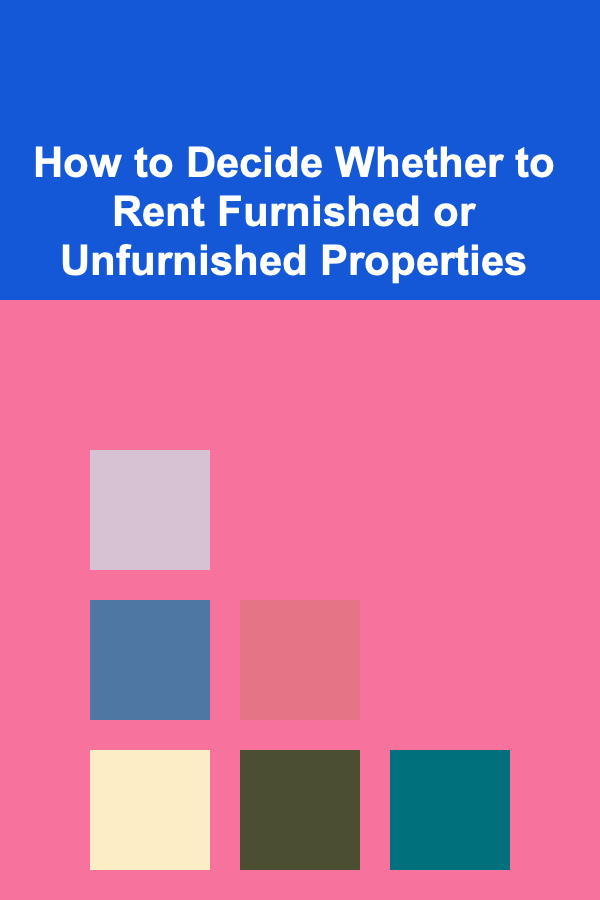
How to Decide Whether to Rent Furnished or Unfurnished Properties
Read More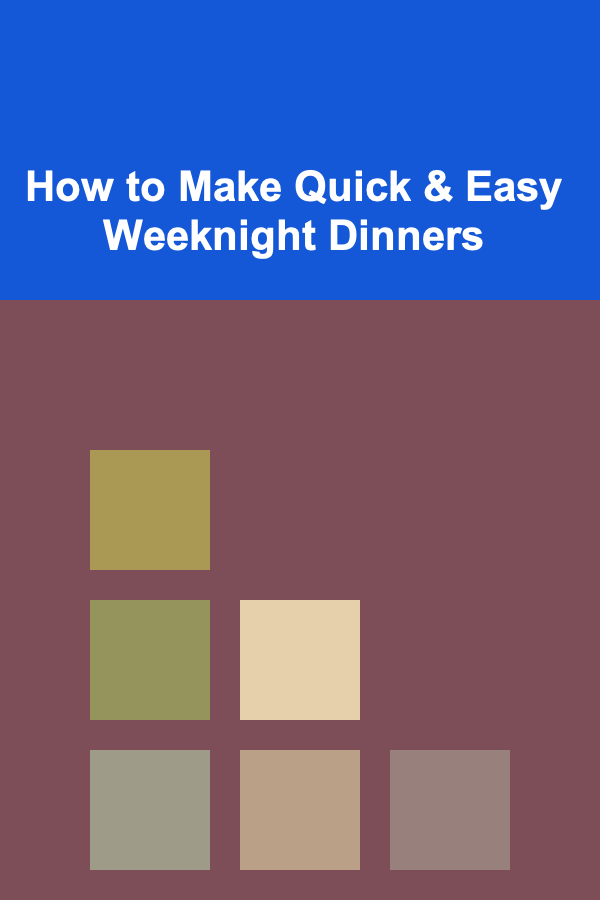
How to Make Quick & Easy Weeknight Dinners
Read More
How to Manage Your Virtual Assistant's Time for Maximum Efficiency in Dropshipping
Read More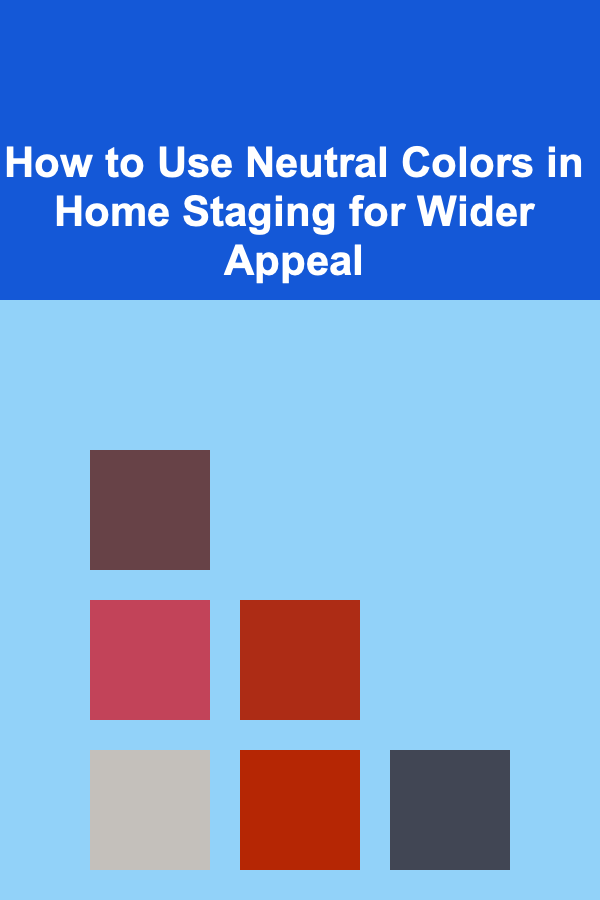
How to Use Neutral Colors in Home Staging for Wider Appeal
Read More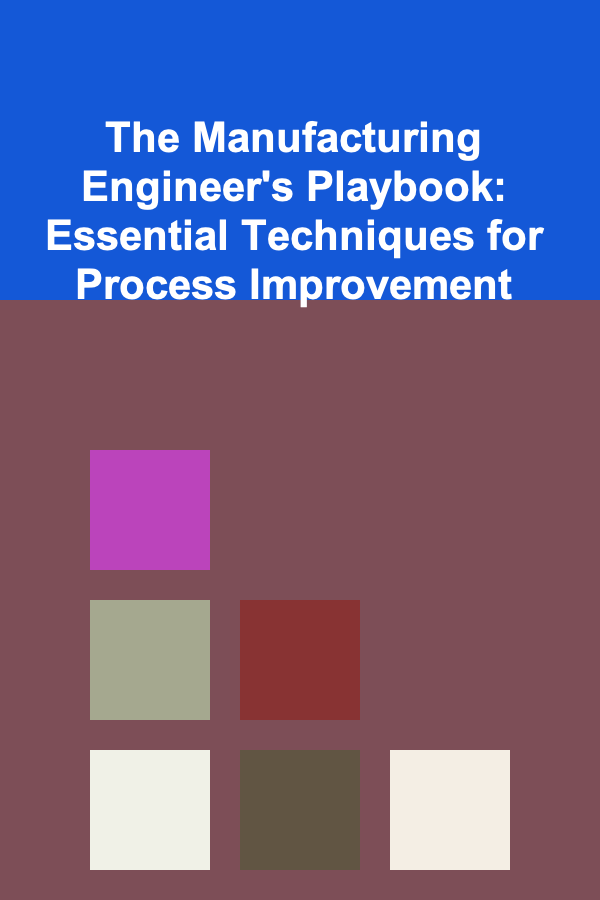
The Manufacturing Engineer's Playbook: Essential Techniques for Process Improvement
Read MoreOther Products

How to Create a Checklist for Event Website and Landing Page Optimization
Read More
How to Decide Whether to Rent Furnished or Unfurnished Properties
Read More
How to Make Quick & Easy Weeknight Dinners
Read More
How to Manage Your Virtual Assistant's Time for Maximum Efficiency in Dropshipping
Read More
How to Use Neutral Colors in Home Staging for Wider Appeal
Read More